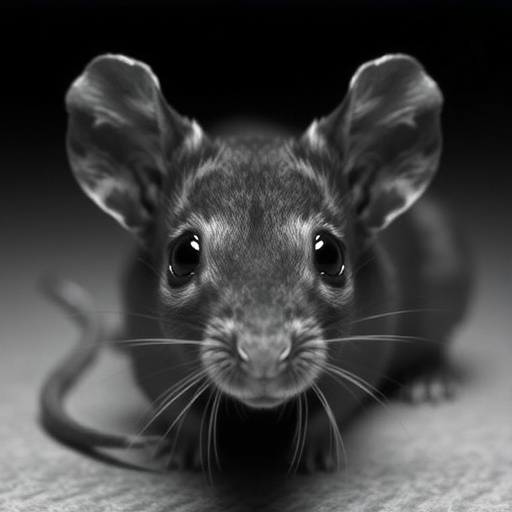In a groundbreaking study that sheds new light on the neural circuitry underlying alcohol abuse, researchers have identified a discrete population of inhibitory neurons in the mouse medial orbitofrontal cortex (mOFC) that plays a pivotal role in regulating binge alcohol consumption. This neuronal ensemble is uniquely activated in response to excessive alcohol intake and functions as a neural brake to curb further drinking behavior. The findings, poised to revolutionize our understanding of addictive behaviors, were recently published in Nature Neuroscience and offer promising avenues for targeted interventions in alcohol use disorders.
Alcohol consumption remains a major global health concern, with millions of deaths linked directly or indirectly to its misuse each year. Chronic alcohol abuse disturbs the brain’s functional architecture, particularly the prefrontal cortex, which governs decision-making, impulse control, and reward processing. Despite established connections between alcohol use and prefrontal cortex dysfunction, the precise neural circuits within this brain region that mediate drinking behavior have largely remained elusive. This study provides the first detailed characterization of a specialized inhibitory neuronal ensemble within the mOFC that specifically responds to binge alcohol intake.
Researchers utilized a combination of sophisticated neuroscience techniques, including optogenetics, neuronal ablation, and circuit tracing, to dissect the function and connectivity of the identified GABAergic neuronal population. The mOFC, known for its role in evaluating reward value and guiding goal-directed behaviors, houses this ensemble that becomes selectively engaged after binge levels of alcohol consumption, but notably not by other rewarding substances such as sucrose or non-alcoholic rewarding solutions. This specificity suggests a tightly regulated circuit designed to modulate alcohol-related behaviors distinctly from other types of reward.
.adsslot_4saH0oiXMS{ width:728px !important; height:90px !important; }
@media (max-width:1199px) { .adsslot_4saH0oiXMS{ width:468px !important; height:60px !important; } }
@media (max-width:767px) { .adsslot_4saH0oiXMS{ width:320px !important; height:50px !important; } }
ADVERTISEMENT
Optogenetic silencing experiments were instrumental in revealing the ensemble’s inhibitory control over binge drinking. When neuronal activity in this population was pharmacogenetically or optogenetically suppressed, mice displayed a marked escalation in alcohol intake, consuming amounts that far exceeded normal binge thresholds. Conversely, the ablation of these neurons, effectively removing their moderating influence, led to runaway alcohol consumption, indicating that these neurons act as a critical endogenous suppressor of excessive drinking.
One of the study’s most striking aspects is the demonstration that this mOFC inhibitory ensemble projects broadly throughout the brain yet exerts its influence over binge drinking specifically through connections targeting the mediodorsal thalamus (MDT). The MDT, a key relay station within the thalamocortical circuitry, is heavily implicated in cognitive control and decision-making processes. By dissecting this projection, the researchers uncovered a mechanism through which the mOFC communicates inhibitory signals that reduce the drive to drink, reinforcing the idea that modulation of this circuit could provide therapeutic benefits in alcohol use disorders.
Importantly, this neuronal ensemble appears to respond exclusively to alcohol, suggesting not only functional but also chemical specificity. This distinction is crucial as it indicates that the brain possesses specialized circuits to detect and regulate behaviors related to different types of rewards. From a therapeutic perspective, targeting this ensemble—or its downstream pathways—offers the potential for interventions that specifically suppress pathological alcohol consumption without broadly dampening motivation or reward sensitivity.
These findings also provide new insights into the dysregulated prefrontal cortical activity reported in alcohol-dependent individuals. Traditional neuroimaging and electrophysiological studies have documented hypoactivity and impaired functional connectivity within this brain region, but until now, the specific neuron types and microcircuits involved have been largely undefined. By pinpointing a discrete GABAergic neuronal group within the mOFC implicated in control over drinking, this research bridges that gap and paves the way for precision targeting of prefrontal cortex dysfunction in addiction.
The broader implications of this work extend beyond alcohol use disorders. The orbitofrontal cortex is a hub for evaluating complex reward contingencies and guiding flexible behavior, which is disrupted in a range of psychiatric conditions, including obsessive-compulsive disorder and certain forms of compulsive eating. Understanding how specific inhibitory ensembles function within this region informs the neural basis of self-control and compulsivity more generally and could inspire novel treatments for a spectrum of maladaptive behaviors.
This study also highlights the power of modern neurotechnologies such as optogenetics, which enable manipulation of genetically defined neuron populations with millisecond precision. By selectively activating or silencing these neurons in behaving animals, the investigators were able to causally link neuronal activity with complex, naturally occurring behaviors like binge drinking. Such causal evidence is rare and invaluable in unraveling the neural substrates of addiction.
Additionally, the discovery that the mOFC-MDT circuit specifically modulates binge drinking behavior underscores the importance of long-range brain connections in the pathology of addiction. While much of addiction research has focused on local changes within reward centers such as the ventral striatum or the hippocampus, this work elevates the role of thalamocortical networks in governing complex motivated behaviors and opens up new lines of inquiry into targeted circuit-based therapies.
Further research is warranted to determine whether similar neuronal ensembles exist in the human orbitofrontal cortex and how these findings translate across species. The translational potential is significant, especially with emerging neuromodulation approaches such as transcranial magnetic stimulation (TMS) or deep brain stimulation (DBS), which could one day selectively enhance the function of such inhibitory circuits to reduce problematic alcohol use in clinical populations.
In summary, this study presents compelling evidence for an inhibitory neuronal ensemble in the medial orbitofrontal cortex that acts as an intrinsic safeguard against excessive alcohol consumption. By selectively suppressing binge drinking through projections to the mediodorsal thalamus, this circuit exemplifies the brain’s capacity for self-regulation and highlights novel targets for intervention. As alcohol abuse continues to pose a daunting challenge worldwide, uncovering such circuit-level mechanisms is a critical step toward developing more effective and precise therapies.
The research community eagerly anticipates further exploration of this mOFC ensemble’s molecular identity, its synaptic partners, and the intracellular signaling pathways that govern its activity. Deciphering these details will be essential for designing pharmacological agents or gene therapies that could potentiate the ensemble’s function. Moreover, integrating this knowledge with behavioral and environmental factors that influence alcohol use will help create comprehensive strategies for prevention and treatment.
Ultimately, this investigation not only advances basic neuroscience but also offers hope for millions suffering from alcohol-related disorders. By tapping into the brain’s natural inhibitory processes, future interventions may help restore balance to dysregulated circuits and reclaim control from compulsive alcohol consumption, transforming the landscape of addiction medicine.
Subject of Research: Neural circuits underlying binge alcohol drinking; inhibitory neuronal ensembles in the medial orbitofrontal cortex; prefrontal cortex regulation of addictive behavior.
Article Title: Suppression of binge alcohol drinking by an inhibitory neuronal ensemble in the mouse medial orbitofrontal cortex.
Article References:
Gimenez-Gomez, P., Le, T., Zinter, M. et al. Suppression of binge alcohol drinking by an inhibitory neuronal ensemble in the mouse medial orbitofrontal cortex.
Nat Neurosci (2025). https://doi.org/10.1038/s41593-025-01970-x
Image Credits: AI Generated
Tags: alcohol use disorders interventionsbinge drinking regulation mechanismsbrain circuitry and impulse controlchronic alcohol abuse effectsinhibitory neurons in alcohol consumptionmedial orbitofrontal cortex and binge drinkingNature Neuroscience publication on alcohol researchneural circuits and addictive behaviorsneuronal ensemble and addictionneuroscience techniques in alcohol studiesoptogenetics in neuroscience researchprefrontal cortex and decision-making





